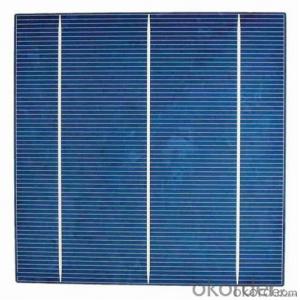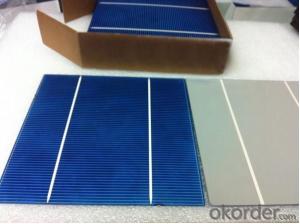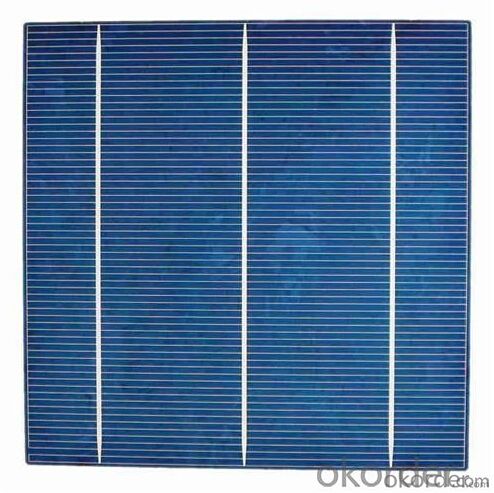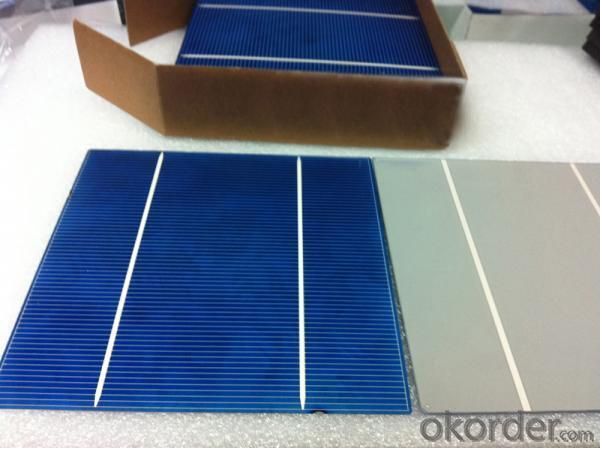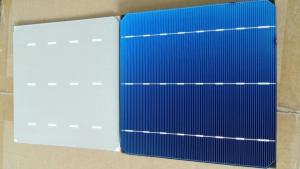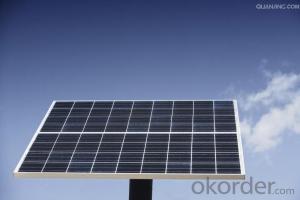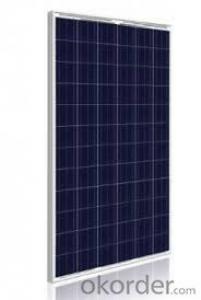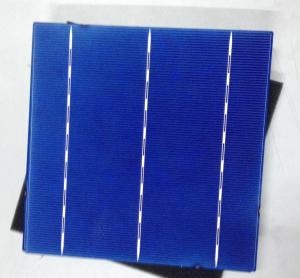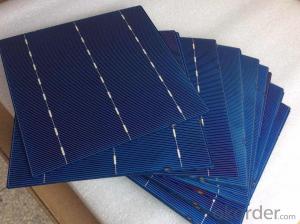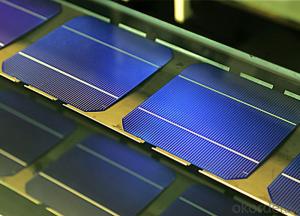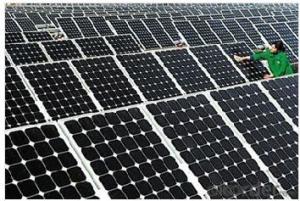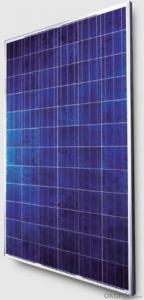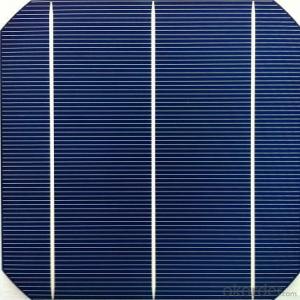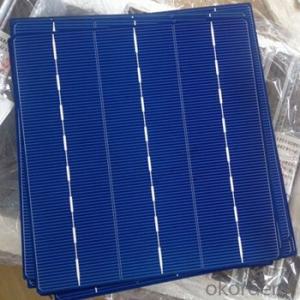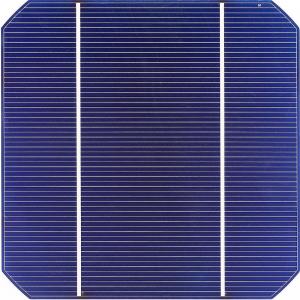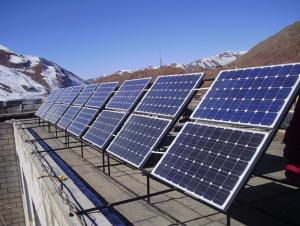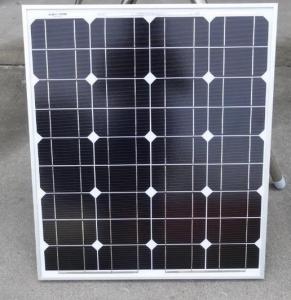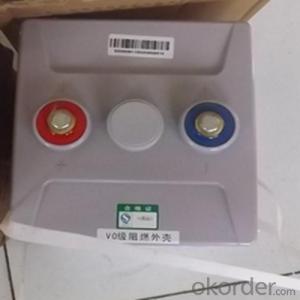First Generation Polycrystalline Solar Cells - Tire 1 Manufacturer - CNBM
- Loading Port:
- China main port
- Payment Terms:
- TT OR LC
- Min Order Qty:
- 6400 watt
- Supply Capability:
- 60000000 watt/month
OKorder Service Pledge
OKorder Financial Service
You Might Also Like
1.Product Description:
Specifications of Poly Solar Cells
Format | 156 mm × 156 mm ± 0.5 mm |
Thickness- | 210μm ± 40 μm |
Front (-) | 1.5mm bus bars (silver),blue anti-reflection coating (silicon nitride) |
Back (+) | 2.5mm wide soldering pads (silver) back surface field (aluminium) |
Temperature Coefficient of Poly Cells
Voc.Temp .coef.%/K | -0.351%/K |
Isc.Temp .coef.%/K | +0.035%/K |
Pm.Temp. coef.%/K | -0.47%/K |
Electrical Characteristic of Poly Cells
Efficiency | Efficiency | Pmax(W) | Average | Impp(A) | Vmpp(V) | Isc(A) | Voc(V) |
1720 | 17.20~17.40 | > 4.186 | > 4.186 | 7.94 | 0.528 | 8.515 | 0.626 |
1700 | 17.00~17.20 | 4.137~4.186 | 4.161 | 7.905 | 0.525 | 8.482 | 0.624 |
1680 | 16.80~17.00 | 4.088~4.137 | 4.113 | 7.863 | 0.521 | 8.402 | 0.623 |
1660 | 16.60~16.80 | 4.040~4.088 | 4.064 | 7.825 | 0.519 | 8.358 | 0.622 |
1640 | 16.40~16.60 | 3.991~4.040 | 4.015 | 7.769 | 0.517 | 8.304 | 0.621 |
1620 | 16.20~16.40 | 3.942~3.991 | 3.967 | 7.713 | 0.514 | 8.248 | 0.619 |
1600 | 16.00~16.20 | 3.894~3.942 | 3.918 | 7.67 | 0.511 | 8.204 | 0.616 |
2.Advantages of Poly Solar Cells
1). Tire-1 Solar Cells’ Manufacturer Quality Guarantee. With a complete and sophisticated quality government system, our Quality Management have arrived world’s leading place. Customer can receive Tire-1 Cells Maker’s Quality Standard Products.
2). Trusted Warranty. We can supply trusted after-sales service to our customer. If our cells are found not in conformity to the specification of manufacturer, or should the inspected quantity found in shortage, or should the packing found damaged, the buyer has the right to claim to the seller. The claim, if any, should be presented to seller within 30 days after cargo's arrival date to the port, together with related inspection report and photos issued and provided by a reputable independent surveyor such as SGS.
3). World’s Leading Manufacturer Equipment. We imported the newest and leading production equipment from abroad. Advanced equipment can guarantee the stable quality of cells. Auto production line can also save labor cost which will further cut our production cost.
4). Bulk supply: With the production capacity of 500MW, we can produce large quantity every month. This can satisfy most customer requirement.
3.Usage and Applications of Poly Cells
Solar cells are often electrically connected and encapsulated as a module.
Photovoltaic modules often have a sheet of glass on the front (sun up) side, allowing light to pass while protecting the semiconductor wafers from abrasion and impact due to wind-driven debris, rain, hail, etc. Solar cells are also usually connected in series in modules, creating an additive voltage.
Connecting cells in parallel will yield a higher current;our solar cells have passed IEC Certification.
With high quality and stable quality. Our Cells can greatly improve the performance of Solar Modules.
4.Packaging & Delivery of Poly Cells
Carton Box Package and Deliver by air. It should be noticed that it should be avoid water, sunshine and moist.
We have organized several common questions for our clients,may help you sincerely:
5.FAQ
1. What’s price per watt?
A: It’s depends on the quantity, delivery date and payment terms of the order. We can talk further about the detail price issue. Our products is high quality with lower price level.
2. Can you tell me the parameter of your solar cells?
We have different series of cells with different power output, both from c-si to a-si. Please take our specification sheet for your reference.
3. How do you pack your products?
We have rich experience on how to pack the panels to make sure the safety on shipment when it arrives at the destination.
4. Can you do OEM for us?
Yes, we can.
5. How long can we receive the product after purchase?
In the purchase of product within three working days, We will arrange the factory delivery as soon as possible. The perfect time of receiving is related to the state and position of customers. Commonly 7 to 10 working days can be served.
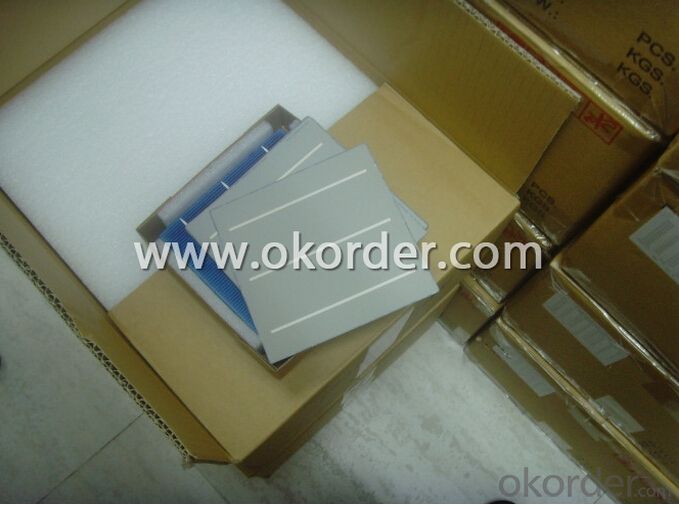
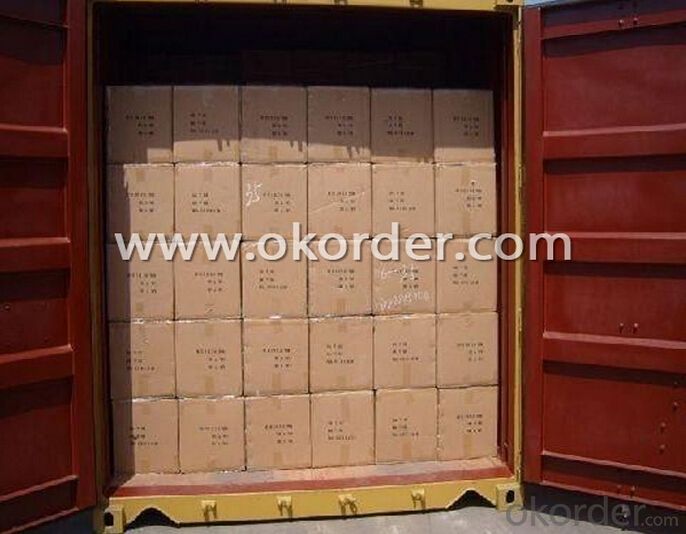
- Q: Are there any books in the market t about solar cells and their applications?
- You can try to search online about the application of solar cells.
- Q: Can solar cells be used for lighting?
- Yes, solar cells can be used for lighting. Solar cells generate electricity from sunlight and this electricity can be used to power light bulbs or other lighting devices. This allows for the use of renewable energy sources and can be particularly beneficial in remote areas or during power outages.
- Q: Can solar cells be used to power remote locations?
- Yes, solar cells can be used to power remote locations. Solar cells, also known as photovoltaic cells, convert sunlight into electricity. They can be installed in remote areas where there is no access to the grid or where it is not feasible to connect to the grid. Solar power is a sustainable and renewable energy source, making it an ideal solution for powering remote locations that are off the grid.
- Q: Can solar cells be used in hotels?
- Yes, solar cells can be used in hotels to harness solar energy and generate electricity for various applications such as lighting, heating, and powering hotel facilities. This not only reduces dependence on traditional energy sources but also helps promote sustainability and reduce carbon footprint in the hospitality industry.
- Q: Can solar cells be used on backpacks or camping gear?
- Yes, solar cells can be used on backpacks or camping gear. They can be integrated into the design of backpacks or attached to camping gear to harness solar energy and convert it into electricity, allowing for convenient charging of devices or powering small electronics while on the go.
- Q: The working principle of solar cells includes the three processes
- The opposite of the electrical symbol of the photogenerated carriers in the solar cell pn junction built under the action of the electric field, the electron-hole pairs are separated, the electrons are concentrated on one side, the holes are concentrated on the other side, and the opposite sex charges are generated on both sides of the pn junction Of the accumulation, resulting in photogenerated electromotive force, that is, photovoltaic voltage.
- Q: Can solar cells be used in space stations?
- Yes, solar cells can be used in space stations. In fact, they are extensively used to generate electricity in space stations such as the International Space Station (ISS). Solar cells capture sunlight and convert it into electricity, providing a reliable and sustainable source of power for various systems and experiments onboard the space station.
- Q: Can solar cells be used in swimming pool heating?
- Yes, solar cells can be used in swimming pool heating. Solar panels can capture sunlight and convert it into energy, which can then be used to heat the pool water. This renewable energy source is environmentally friendly and can help reduce energy costs associated with pool heating.
- Q: How efficient are solar cells?
- Solar cells are highly efficient in converting sunlight into electricity, with the most advanced ones achieving an efficiency of around 20-25%. However, the average efficiency of commercially available solar panels is typically around 15-20%.
- Q: Can somebody list some of the materials used for making solar cells?
- The basic component of a solar cell is pure silicon, which is not pure in its natural state.
Send your message to us
First Generation Polycrystalline Solar Cells - Tire 1 Manufacturer - CNBM
- Loading Port:
- China main port
- Payment Terms:
- TT OR LC
- Min Order Qty:
- 6400 watt
- Supply Capability:
- 60000000 watt/month
OKorder Service Pledge
OKorder Financial Service
Similar products
Hot products
Hot Searches
Related keywords
